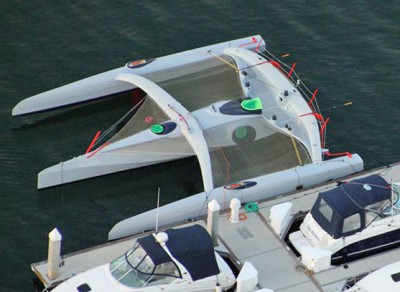I attended a great lecture by Greg Lynn, and architect, boat designer, thinker and one of Time magazine’s 100 most something one year. Influential people?
www.ted.com/talks/greg_lynn_on_organic_design?language=en
He was discussing 3D printed parts for boats, but he is also working on marine design informing architectural design.
He did discuss his trimaran, Girlfriend. I have declared in the past that the tri must have a lot of bog involved in building, as all parts are so organic and smooth. And thus add extra weight. I have to take it back a bit. The interior was light, and entirely built with molds. The interior alone cost some $100K, and weighed around 80 lbs. But due to print-through, it took an extra 100 lbs of bog.
Every part had a full size eps foam mold. Its a big deal. Its time and money that I could never imagine on a boat.
We swapped cards. I hope we get to talk more.

Hi Dan,
The boat is for sale and we want to more use from the molds before we recycle the EPS. As the molds for the arms and floats have to be used twice per boat we think the molds are good for 4 more uses or 2 more boats.
Regarding 3D printing, it isn’t your grandmother’s 3D printing anymore, there are several companies and services making 3D printed working components; Airbus and Boeing have planes flying with 3D printed parts for a couple of years now. The rudder arms and quadrants are designed with a safety factor of 3 just in case.
Best,
Greg
It was an interesting process I recall they believed the full sized CNC cut EPS foam female hull molds would be good for about 4-5 uses. They were cut at Kreysler & Associates.
https://www.youtube.com/watch?v=5rWqKf1gfJA
It is for sale. I don’t trust 3d printed for anything other than disposable few times use.